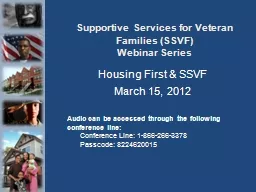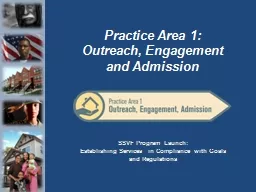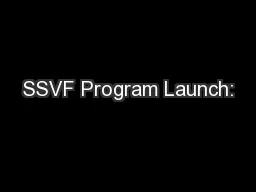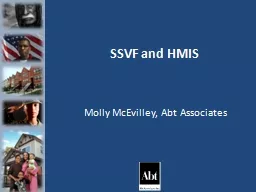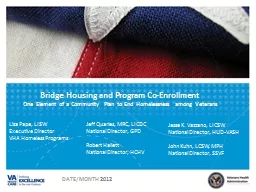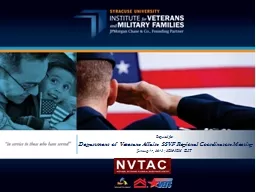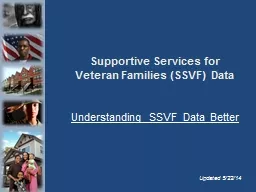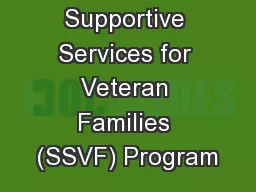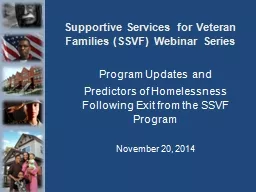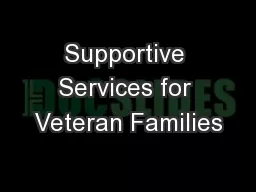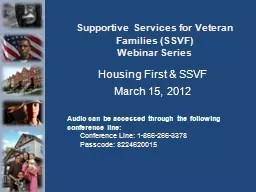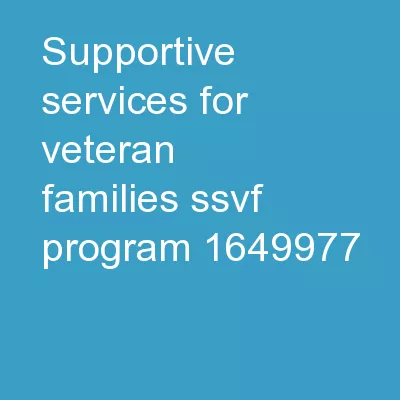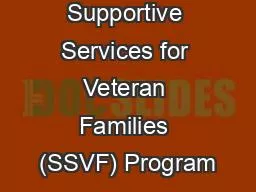PPT-Supportive Services for Veteran Families (SSVF)
Author : luanne-stotts | Published Date : 2018-10-07
Webinar Series Housing First amp SSVF March 15 2012 Audio can be accessed through the following conference line Conference Line 18662663378 Passcode 8224620015
Presentation Embed Code
Download Presentation
Download Presentation The PPT/PDF document "Supportive Services for Veteran Families..." is the property of its rightful owner. Permission is granted to download and print the materials on this website for personal, non-commercial use only, and to display it on your personal computer provided you do not modify the materials and that you retain all copyright notices contained in the materials. By downloading content from our website, you accept the terms of this agreement.
Supportive Services for Veteran Families (SSVF): Transcript
Download Rules Of Document
"Supportive Services for Veteran Families (SSVF)"The content belongs to its owner. You may download and print it for personal use, without modification, and keep all copyright notices. By downloading, you agree to these terms.
Related Documents

